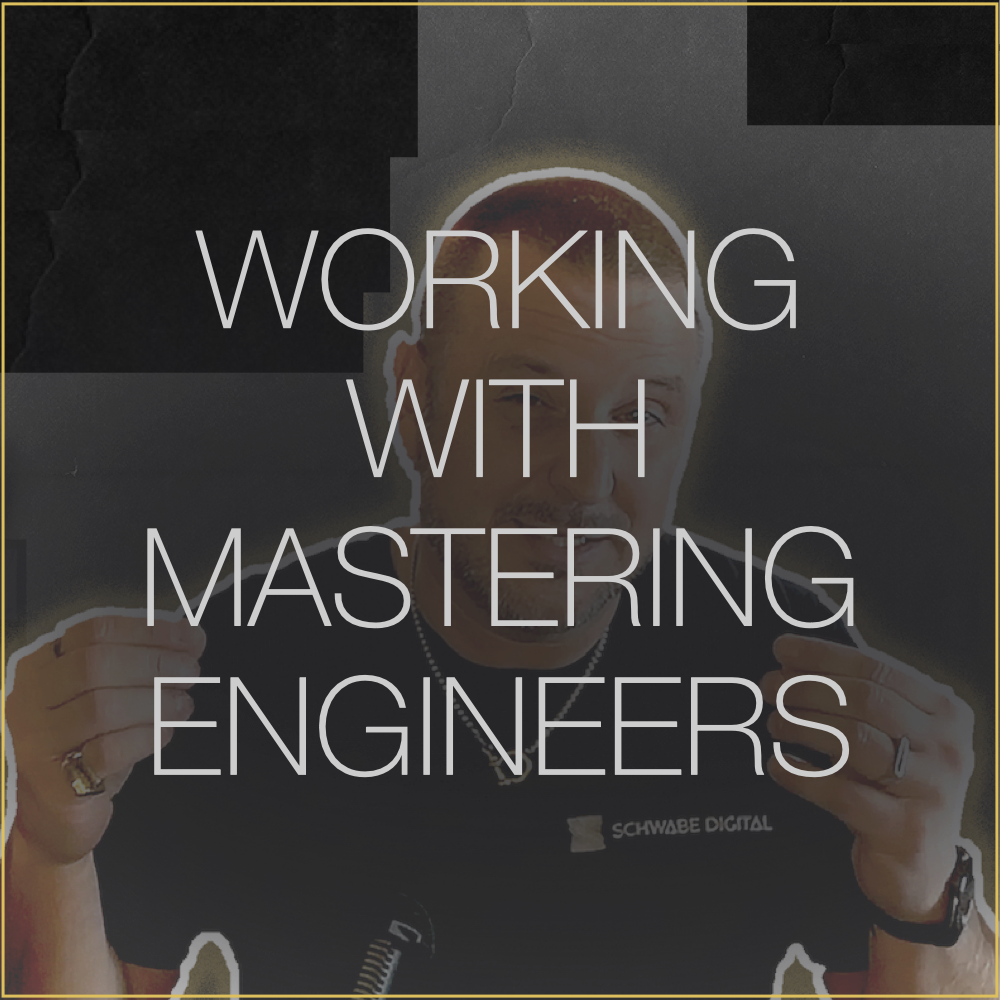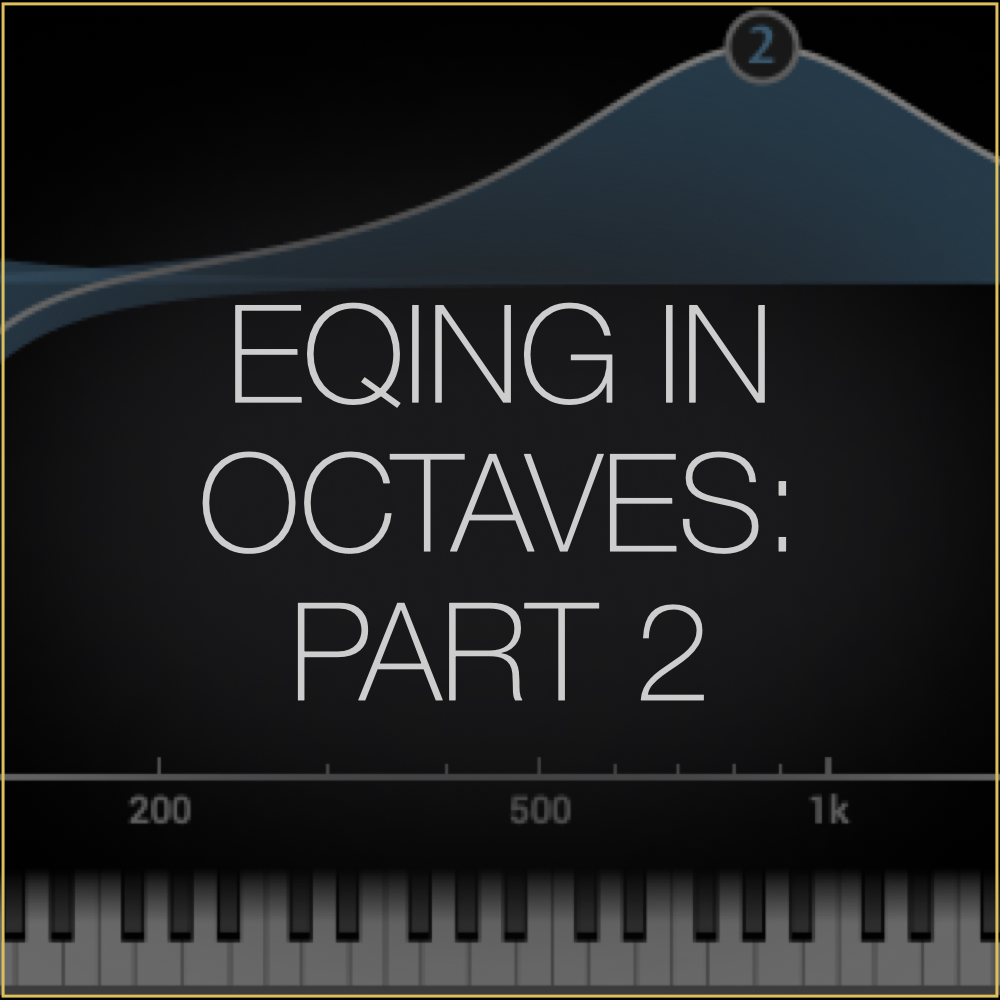EQing in Octaves: Part 3
Last week, we explored the lows and mids—the fundamental frequencies that give your mix its weight, warmth, and power. Today, we'll focus on the high-mids and highs, where brightness and articulation live. These frequencies are crucial for bringing excitement and clarity to your mix, but they require precise placement to avoid harshness. Let's talk about how to craft a top end that's clear, balanced, and musical.
High-Mids: Octaves 7 and 8 (1.5–6 kHz)
Our ears are remarkably sensitive to frequencies in the high-mids—a trait rooted in evolution. This range, where the human voice naturally resonates, is critical for speech intelligibility and the brightness we associate with clarity in music. Our ears are finely tuned to pick up the most detail in this range—not by chance, but because it’s how we’ve evolved to communicate and survive in groups.
If your mix sounds harsh, piercing, or fatiguing, the high-mids between 2 kHz and 8 kHz are often to blame. Elements in this range can easily turn an engaging mix into an exhausting one if they’re too prominent.
For example, an overly pokey attack time on a compressor applied to an instrument in this range can push it too far forward, making it irritating. On the other hand, overusing a resonant suppressor like Soothe2 and stripping away too much transient detail can leave your mix sounding distant, dull and lifeless.
It’s not just the loudness in this frequency range that matters—it’s also the shape and intensity of the transients. Psychoacoustically, our ear associates transients in this range with something near or approaching—something potentially dangerous—so it demands our attention. A lack of transients, on the other hand, signals distance.
This response is hardwired into us—an instinctive reaction shaped by evolution to help us survive and detect threats. These same principles apply to mix depth. Reducing mids and transients creates a sense of distance and lowers attention, while boosting them brings elements forward, increasing perceived closeness and focus.
Key Tips:
If your mix feels harsh or fatiguing, check the high-mids (2–8 kHz). Use subtle EQ cuts to tame resonances without killing clarity. Balance is the goal—not dullness. Avoid excessive tight cuts to prevent phase smearing.
The transient shape in this range influences both the perceived loudness and the depth of a sound in the mix, determining whether it sits forward or further back. Sudden transient bursts push sounds forward and draw our attention, but they can also cause ear fatigue. Excessive transient control, on the other hand, pushes sounds backward and can make a mix feel distant and lifeless. These are the extremes—explore them, but don’t ignore the middle ground.
How you shape transients with compression, saturation, and distortion is crucial for defining both loudness and front-to-back placement of instruments in the mix.
Highs: Octaves 9 and 10 (6–20 kHz)
The highest octave in a mix is where air and overtones live. It’s not about distinct musical notes but rather the harmonic definition that gives sounds their sense of openness and space. This is where cymbals shimmer, vocal articulations like 'esses' and 'Ts' cut through, and instrument textures come alive.
Personally, I find that frequencies above 17 kHz often sound harsh in digital recordings—maybe a hot take, but it’s been a consistent observation. For example, I frequently use a low-pass filter on vocals between 13–18 kHz to tame distracting or overly bright frequencies. The SSL 9000 LPF is great for this.
However, if you ask a seasoned engineer, they might disagree because they historically used tubes and tape, which naturally softened and compressed these frequencies.
Quick bursts of energy in the highest octave can be especially fatiguing. Our ears enjoy brightness but recoil from excessive dynamics and resonance in the high-end. It’s not just about volume—it’s about the shape of those frequencies. Sudden boosts in the lows, like sub-bass, feel powerful and satisfying. But sudden spikes in the highs? They pierce our ears, triggering discomfort and alarm.
Managing the dynamics of this range is key to creating a mix that’s bright and open without being harsh. When balanced correctly, the highest octave can make a mix feel expansive and alive, as if it’s breathing—but overdo it, and the mix can quickly become brittle or fatiguing.
Key Tips
Sudden bursts in the highs—like an uncontrolled 'ess' or harsh cymbal—can be piercing. Start by adjusting their intensity with shelves or a low-pass filter. If the top end is too dynamic, use de-essers, tape emulations, or dynamic EQ to tame the peaks, adjusting attack time carefully. Don’t shave the transients off—right-size them for the mix. Our next plugin HiFAL is built for this, giving you effortless control over high-frequency transients.
Selective boosts around 8 kHz help vocals and lead instruments pop forward in the mix. This frequency adds presence while remaining musically connected, unlike the more airy "sizzle" of 12 kHz and above. Keep the boost subtle to avoid harshness or excessive brightness. While your instinct might be to make things brighter, sometimes reducing density in the low-mids and dynamically controlling the highs is a more effective way to achieve clarity and balance. Again, the transient shape and dynamics are as important as the level.
Making EQ Decisions That Matter
Thinking in octaves can simplify your EQ workflow, making it feel more musical and less like a technical chore. Instead of getting bogged down in the specifics of thousands of Hertz, simplify your approach with 10 octaves: use wide bells (1 octave or more) to boost and add character, and narrow bells (1 octave or slightly less) to clean up problem frequencies.
In an era of tools like Pro-Q4 and Soothe2, sleek interfaces can lead us to overthink and fix problems that don’t need fixing. While these tools are valuable, mixing and mastering are often simpler than we make them out to be. If your EQ moves start resembling a science experiment, you’ve likely gone too far.
Keep it simple—think in octaves and approach EQ with intent. This mindset aligns technical choices with musical goals, making EQ decisions feel more gestural and intuitive. Also, remember that transient intensity and shape play a major role in how we perceive harshness.
Thats it for now. In the next email, I'll discuss how tweaking our listening environment to balance perceptual bias can help us create mixes that translate across different playback systems.
Have questions? Just hit reply, and we’ll get back to you. You can also tag us on instagram—we’re always happy to connect!
Be well,
Ryan Schwabe
Grammy-nominated and multi-platinum mixing & mastering engineer
Founder of Schwabe Digital

















